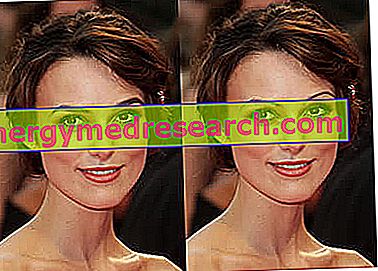
The multi-layered (or compound) paved (or squamous) epithelium is formed by flattened cells arranged in several layers .
As with the other multilayered epithelia, the deeper cellular layer (leaning against the basement membrane) is formed by actively proliferating cells, capable of generating all the overlying cells.
Observing a compound paved epithelium (for example the epidermis) under the microscope it is noticed that the deep layers have cells of cubic or cylindrical shape. These cells, as they move towards the surface, flatten and undergo profound regressive modifications (they reduce their own metabolic activity, until they lose their proliferative capacity). Furthermore, the bonds between one cell and the other weaken towards the surface, so that the most superficial cells detach and peel with a certain ease.
The compound paved epithelium has above all a protective function and is subject to a strong turnover, given that the superficial cellular elements are eliminated by desquamation. From here we can understand how important the proliferative activity of the basal layers can be.
An important distinction must be made between keratinized (or horny) paving epithelium and non-keratinized paving epithelium.
- paving epithelium keratinized compound : it constitutes the outer surface of our body (epidermis) and the "masticatory mucosa" of the oral cavity (gums and interdental papillae, mucous membrane of the tongue, mucosa of the hard palate). It is a very resistant epithelium from the mechanical and waterproof point of view, that is very effective in preventing the indiscriminate passage of substances from the outside towards the inside and vice versa. These particular characteristics are enhanced by the presence of keratin, a protein that is acquired by cells as they rise to the surface. The keratinization process transforms them into horny scales, that is, dead cells, with no nucleus and no metabolic activity whatsoever.
- paving epithelium, non-keratinized compound : it has no keratin and is therefore less resistant than keratinized paving epithelium; it is also more smooth, so it is not by chance that it is found at the level of the mucous membrane of the oral cavity, the esophagus and the vagina, areas in which mechanical resistance is still important, but in which a certain glandular function is also required. This type of epithelium, in fact, coats the underlying mucous membranes and is lubricated by the secretion of the glands, whose excretory ducts open on the surface of the epithelium.
Unlike the cells of the keratinized multilayered epithelium, even in the superficial layers the cells conserve the nucleus and still maintain the properties of a cell; however, as in the previous case, more and more of a substance (precheratin) is enriched, which in the most superficial cellular layers gets to occupy almost the entire cytoplasm.



